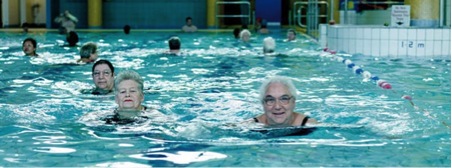Sport and Exercise Medicine: The UK trainee perspective (A BJSM blog series)
By Drs. Andrew Murray (@docandrewmurray) and David White (@rightwhite1)

Health systems worldwide need to think differently. Fancy new medications and rescue helicopters may help once people become unwell, but the 2010 Global Burden of Disease study highlights that over 70% of disease burden in the UK is caused by Non Communicable Diseases- whose principal root causes include physical inactivity, smoking, and excess alcohol.
Physical Activity
Bulletproof evidence worldwide proves that physical inactivity kills a lot of people and makes a lot of people ill through chronic disease. Time and resources need to be directed towards getting people off the couch, which will increase life expectancy, decrease health inequalities, and save lorry loads of cash for health boards and the UK economy.
23 and a half hours is a video worth sharing whilst the 2012 Lancet series highlighted the problem as “pandemic”.
What works to get people active?
Comprehensive and systematic approaches to address excess alcohol and smoking have had considerable success- smoking rates have declined by over 25% in the last 30 years in Scotland. The same is required for physical inactivity
“7 Investments that Work for Physical Activity” show where to get maximum bang for your buck. They are evidence supported and applicable to local and national communities. The 7 investments have also influenced a National Implementation Plan for Physical Activity in Scotland, as well as guided Local Authorities and Community planners. In Scotland, action plans are moving forward in each of these “7 investment areas.”
As one example, within Health and Social Care the Scottish Government has outlined plans to:
1) Embed physical activity for health into undergraduate and postgraduate curriculums, CPD and workforce development.
2) Embed physical activity for health into primary care, using a simple validated assessment tool, brief advice and brief intervention.
3) Embed physical activity for health into secondary care using a National Secondary Care Pathway.
4) Inspire medical leaders to prioritise getting people active, championing this in health boards, royal colleges, hospital or department.
Conclusion
Health boards and governments that bury their heads in the sand and hope that the problem of physical inactivity will go away may be consigning their populations to poor health outcomes, and their children to a dark economic future. Those with an interest in Sports and Exercise Medicine are uniquely placed to help populations “sit less and move more.” Sharing and helping implement “7 investments that work” will increase life expectancy, improve life quality, and save cash for the communities, health boards and governments . There is considerable scope and opportunity to create jobs, and make a difference in this area.
************************************************************
Dr Andrew Murray (@docandrewmurray) is a registrar in SEM and worked for a year as the Scottish Government’s first Physical Activity Champion.
http://www.youtube.com/watch?v=WKvd-yPFuKM&list=PLsRNoUx8w3rM_7URm7bIQXHvQzSOOVigQ&index=5
Dr David White (@rightwhite1) is currently employed as the Physical Activity Champion within the Scottish Government, working in the offices of the Chief Medical Officer, and the Minister for Commonwealth Games and Sport.
Dr James Thing co-ordinates “Sport and Exercise Medicine: The UK trainee perspective” monthly blog series.